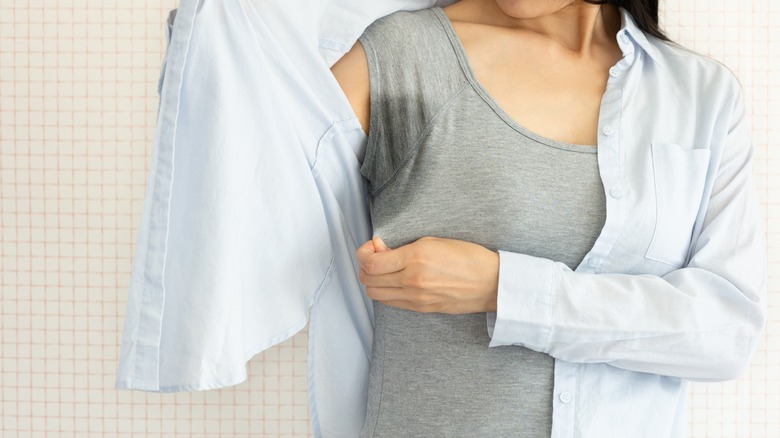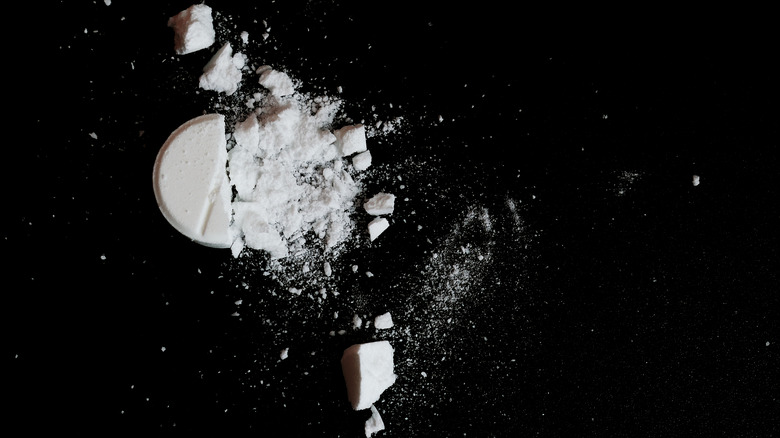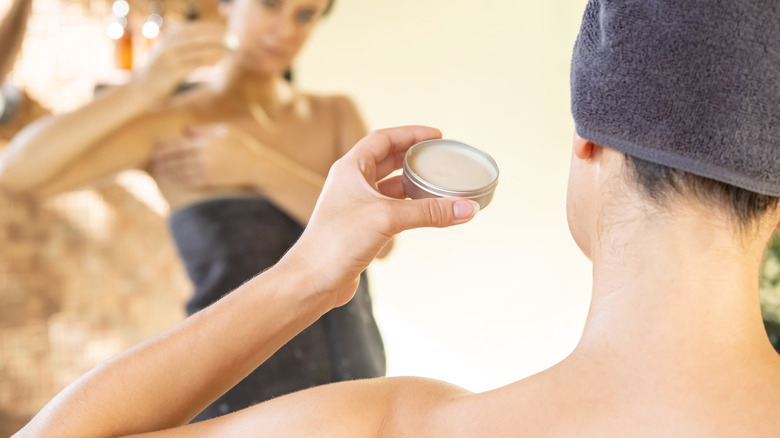Will Aspirin Really Help Get Rid Of Underarm Shirt Stains?
Underarm sweat stains are particularly stubborn to treat when doing laundry. The proteins they contain, coupled with the residue of antiperspirants and deodorants that they mix with, cause them to stick to fabric in a way that's tough to remove with a regular wash. Specific techniques are then needed to help break down these components. One common household remedy calls for a paste of water and some aspirin tablets. This solution can either be applied as a paste made with cold water or as a hot water soak with two and a half crushed aspirin tablets for every liter of water.
This medicine's ability to remove sweat stains may not be foolproof, though. Despite the aspirin soak and aspirin paste's widespread publicity online, some attempts to replicate its success have fallen far short of the whitening power of regular bleach. As with all home remedies, it helps to look into things a bit more to find out just how reliable this common recommendation is.
Does aspirin actually work as a bleach?
Authors who support the aspirin paste remedy say that you need to crush two uncoated aspirin tablets into a fine powder and mix with cold water to create a paste. Use a toothbrush to apply the paste directly to the sweat stain on the clothing, let it sit for a few hours, and then wash the item like normal. You can also soak the stained area in a concoction of 2 liters of hot water and five crushed tablets of aspirin. Note that the longer you leave it on or to soak, the more effective it's supposed to be. In theory, you can treat stubborn stains overnight. Some guides say this hack works just on white cotton shirts and also requires an added step of applying liquid detergent onto the stain before washing.
The salicylic acid in aspirin is what is supposed to act as a stain remover; however, the science isn't really there to support it. As science communicator Ada McVean writes for the McGill University Office for Science and Society, aspirin isn't a noteworthy bleaching agent. When mixed with water, aspirin — also known as acetylsalicylic acid (ASA) — turns into salicylic acid and acetic acid, or vinegar. The substance can then technically act as a bleaching agent, but its reduction potential is too low to effectively reduce the color of the stain you're trying to treat. Common bleach, in comparison, has a much higher reduction potential, which is why it is so effective at removing stains.
Alternatives to the aspirin hack
You can still try the aspirin paste or aspirin soak home remedies, but if they don't work, consider other alternatives while observing good practices for caring for stained garments. First, watch what you do right when the stain happens. When you take off that soiled shirt, try to treat and wash it immediately because leaving items to sit for long causes stains to set. Pre-treat with a commercial stain remover, white vinegar, or something more unusual like meat tenderizer powder. Gently scrub with a brush, then wash. Afterward, make sure the stain is out before moving the item to the dryer. Re-apply the pre-treatment and re-wash as much as you need to.
The deodorant you use can also play a role in reducing unsightly underarm shirt stains to make the washing process easier on you. Antiperspirants with aluminum are the main culprits behind your pit stains and accompanying odor, so consider alternative products like natural deodorants. It also helps to apply a thin layer of deodorant and to wear looser shirts.


